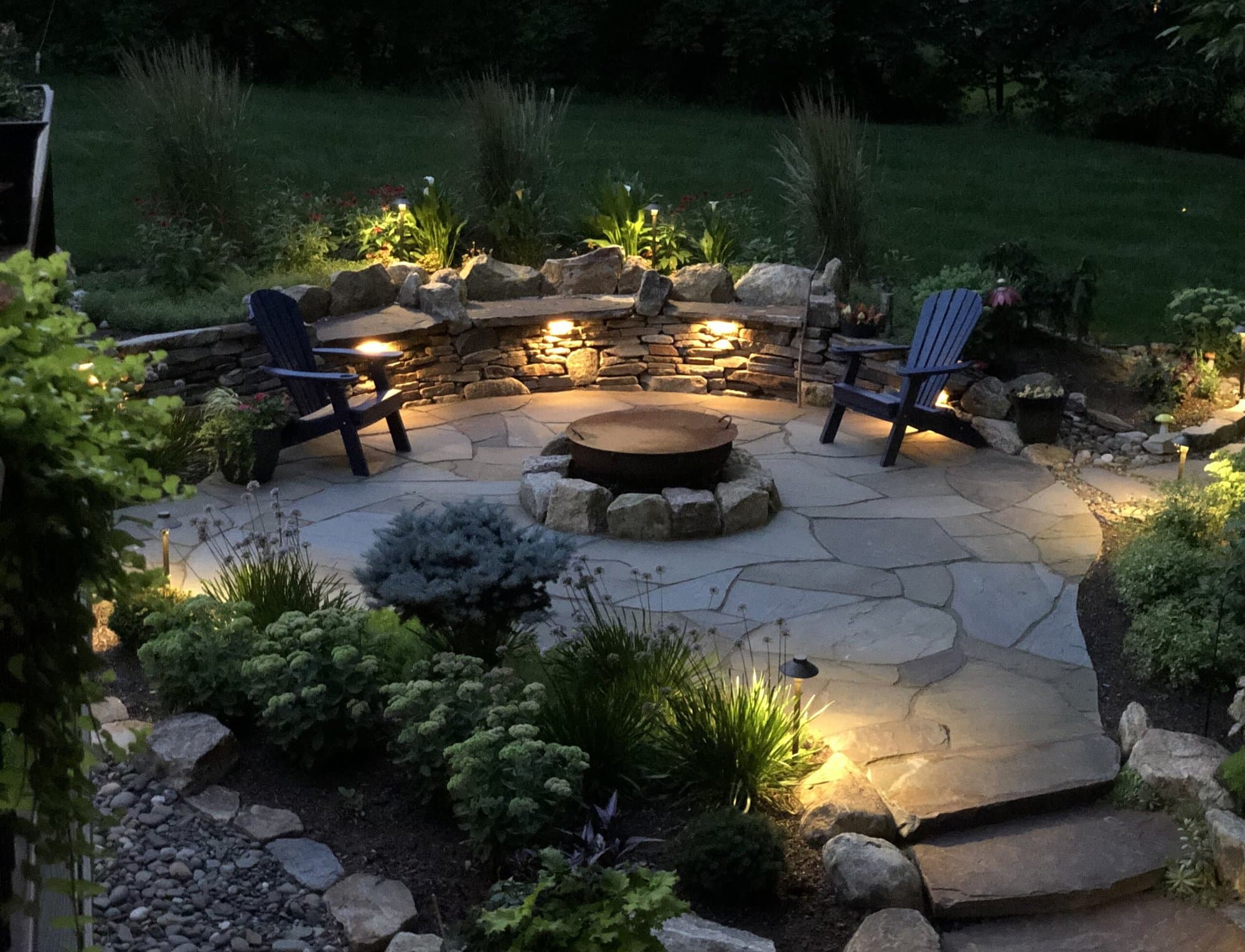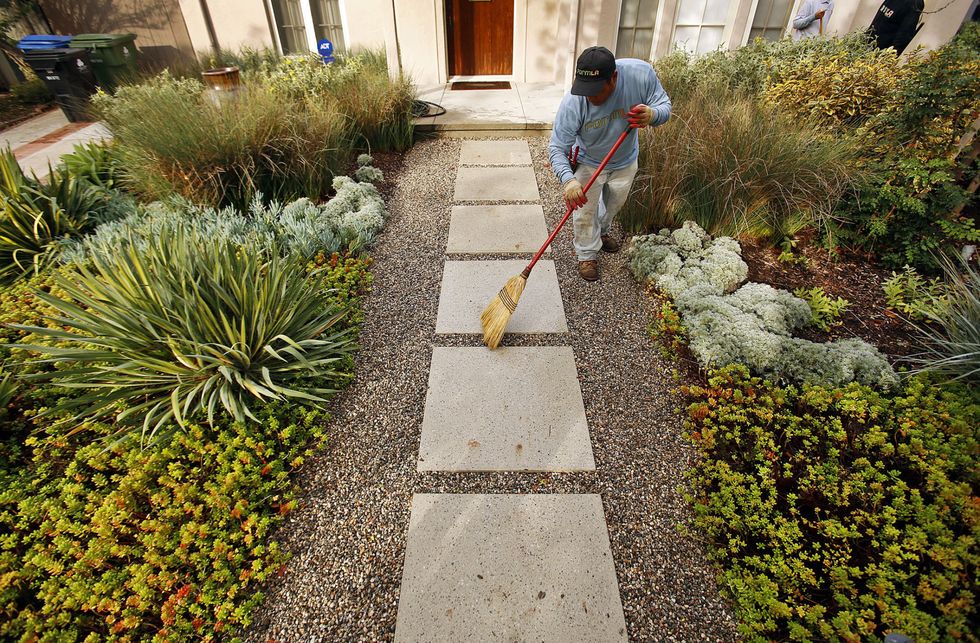A Comprehensive Overview to Designing and Implementing Effective Landscape Design Solutions
The art and scientific research of landscape design expand beyond simple appearances; they include a thoughtful integration of layout principles, ecological stewardship, and sensible implementation. A detailed guide to effective landscaping remedies starts with a thorough understanding of your outside space, stressing the value of unity, percentage, and equilibrium. As we discover sustainable techniques and the option of appropriate plants, the effects for biodiversity and area well-being become significantly evident. What techniques can one utilize to make sure these landscapes not only thrive yet likewise grow attuned to their environments?

Understanding Landscape Layout Concepts
One might wonder what fundamental aspects add to efficient landscape layout. At its core, effective landscape layout depends upon a number of crucial concepts that guide the plan and choice of aspects within an area. These principles consist of unity, proportion, rhythm, and balance, each offering to create an unified outside environment.
Unity describes the natural connection amongst different elements, making sure that they collaborate aesthetically and functionally. Equilibrium can be attained via asymmetrical or symmetrical arrangements, allowing the landscape to really feel steady and inviting. Proportion involves recognizing the range of aspects in connection with each other and the surrounding setting, advertising aesthetic consistency and comfort.

Analyzing Your Outdoor Area
Prior to applying the concepts of landscape layout, a thorough analysis of your outside space is vital. This first analysis aids specify the scope of your landscaping job and makes sure that your style straightens with the one-of-a-kind qualities of your residential or commercial property. Begin by evaluating the measurements of your area, taking specific dimensions to recognize the available location for numerous aspects such as patios, paths, and yards.
Following, observe the existing functions of your landscape, including topography, soil high quality, and drainage patterns. These factors considerably affect plant option and positioning. Furthermore, examine the sunshine direct exposure throughout different locations throughout the day, as this will certainly affect the sorts of plants that grow in your yard.
Consider the microclimates developed by structures, trees, and various other barriers, as they can affect temperature level and wetness degrees. Take note of any type of existing plants or hardscape aspects that you wish to maintain or get rid of. This comprehensive assessment prepares for a educated and effective landscaping option, making certain that your design is not just visually pleasing but lasting and additionally useful for several years ahead.
Lasting Landscape Design Techniques
Including sustainable landscaping strategies is vital for creating an environmentally responsible outside space. These practices not just promote ecological equilibrium yet likewise boost the visual and practical worth of a landscape. One foundational strategy is the usage of additional resources indigenous plants, which call for less water and maintenance while sustaining local wildlife. Implementing effective irrigation systems, such as drip irrigation, lessens water waste and ensures that plants obtain ample dampness.

Another effective strategy is the calculated positioning of trees and bushes to provide natural windbreaks and shade, hence reducing energy costs (Palm Desert Landscaping). Rainfall yards can be integrated into the landscape style to take care of stormwater drainage effectively, filtering pollutants before they enter rivers
Selecting the Right Plant Kingdoms
Choosing the right plants for your landscape is important to attaining both visual allure and eco-friendly consistency. The process starts with an understanding of your neighborhood environment, soil problems, and the certain microenvironments within your landscape. Assessing aspects such as sunlight exposure, moisture levels, read what he said and existing flora will aid you choose plants that prosper in your one-of-a-kind setup.
Take into consideration including indigenous plants, as they are well-adapted to regional conditions, require less maintenance, and support regional wild animals. In addition, selecting a diverse variety of varieties can enhance biodiversity while reducing the threat of disease and pest break outs. It is crucial to examine the growth routines, flowering periods, and seasonal shades of possible plants to create a cohesive and dynamic landscape.
Furthermore, think of the planned use the space; for instance, if the area will experience high foot traffic, choose durable ground covers. By thoughtfully choosing plants that line up with both your aesthetic objectives and environmental requirements, you can create a lasting landscape that not only enhances your home yet also contributes favorably to the bordering community.

Implementation and Maintenance Techniques
As soon as the ideal plants have been chosen for your landscape, the focus shifts to effective execution and continuous maintenance strategies. Effective setup starts with proper site preparation, which consists of soil testing to figure out nutrient levels and pH, followed by amending the dirt as needed. Meticulously organize plants according to their development practices and light pop over to these guys requirements, making certain ample spacing to advertise healthy and balanced growth.
Watering is a critical component of application. Develop a watering schedule that thinks about the details demands of each plant species, adjusting for seasonal changes. Utilizing drip irrigation systems can boost water efficiency and minimize runoff.
Upkeep methods need to be executed to ensure the longevity and vigor of your landscape. Routine tasks include weeding, mulching, and trimming to control growth and prevent condition. Fertilizing should be performed based on dirt examinations, giving the required nutrients without over-fertilizing.
Checking for illness and insects is necessary; early detection can protect against substantial damage. Finally, seasonal changes to upkeep routines, such as winterizing perennials and preparing for springtime growth, will make sure that your landscape continues to be healthy and balanced and aesthetically attractive year-round.
Final Thought
In conclusion, effective landscaping remedies need a thorough understanding of style concepts, careful analysis of outdoor areas, and the application of sustainable methods. The choice of appropriate plant varieties plays an essential function in enhancing visual charm and environmental durability - Palm Desert Landscaping. Successful execution and ongoing maintenance additionally make certain the long life and vitality of landscapes. By integrating these elements, landscapes can be transformed right into attractive, useful settings that promote biodiversity and add positively to neighborhood well-being.
One could wonder what foundational components add to reliable landscape layout. At its core, successful landscape style pivots on numerous vital principles that assist the plan and choice of aspects within an area.Choosing the right plants for your landscape is crucial to accomplishing both aesthetic appeal and ecological harmony. It is essential to assess the development behaviors, flowering periods, and seasonal colors of prospective plants to create a dynamic and natural landscape.
When the appropriate plants have been picked for your landscape, the focus shifts to efficient application and ongoing maintenance techniques.
Comments on “Why Picking the Right Palm Desert Landscaping Service Matters”